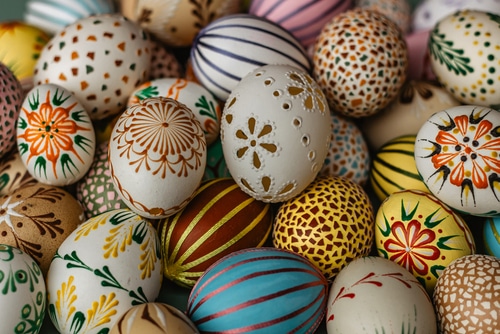Key Highlights:
- Discover one-of-a-kind Easter egg traditions from different countries
- Learn what specific colors and patterns symbolize in each culture
- Explore eco-friendly dyeing techniques from places like the U.S. and Slovenia
- Marvel at the artistry of washi eggs in Japan and porcelain eggs in France
- Understand how Easter eggs reflect history, heritage, and hopes for new life
Spring is in the air, and that can only mean one thing: Easter is just around the corner. For many around the world, it’s a time of joy, reflection, and renewal. And no symbol captures the magic of Easter quite like a beautifully decorated egg.
But did you know that the way we decorate eggs and what they represent changes from country to country? From wax-dyed masterpieces in Ukraine to confetti-filled cascarones in Mexico, Easter eggs are so much more than just cute decorations. They’re a window into culture, faith, and creativity.
So let’s hop around the globe and discover the fascinating, artistic, and sometimes surprising world of Easter eggs.
Ukraine: Tiny Masterpieces with Deep Roots
In Ukraine, Easter eggs, also known as pysanky, are treated like miniature works of art. Created using a wax-resist dyeing method that dates back centuries, these eggs are covered in intricate, meaningful designs inspired by folklore, nature, and spirituality.
Each color and symbol carries weight. A triangle might symbolize the Holy Trinity, while vibrant red often represents love and joy. The process is painstaking, but the results are breathtaking. Pysanky are more than decorations, they’re heartfelt gifts that carry blessings from one generation to the next.
Germany: Hanging Eggs on Trees
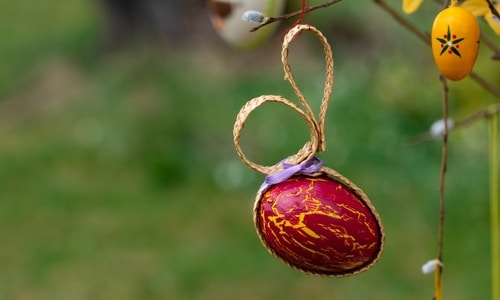
In Germany, Easter spills out into the garden in the form of Osterbaum, or Easter egg trees! Families hang hand-painted eggs on the branches of shrubs and trees, transforming them into vibrant symbols of new life.
The tradition has roots in pre-Christian spring festivals and remains a beloved way to usher in the season. Whether you’re strolling through a small town or walking into a shop, spotting an Osterbaum instantly puts you in a festive mood.
Sweden: Soft Colors and Natural Beauty
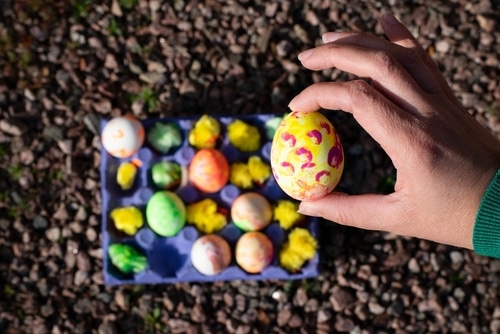
In Sweden, Easter eggs often reflect the beauty of the natural world. Decorated in gentle pastel tones and adorned with floral or animal motifs, they celebrate the softer side of spring.
A popular decorating method includes wrapping the eggs in onion skins or laying small leaves against the shell before dyeing them. The result? Dreamy patterns that look like they’ve been stamped straight from the forest. Swedish Easter eggs are a reminder of the connection between nature, tradition, and rebirth.
Greece: Bold Red Eggs and a Cracking Game
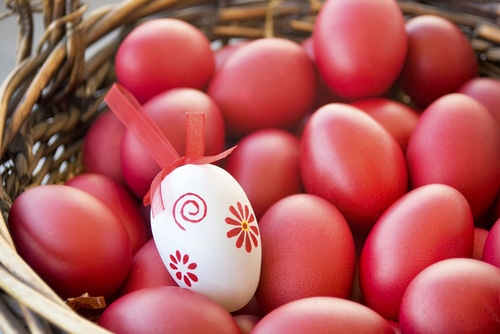
In Greece, Easter eggs are dyed a deep, powerful red, representing both the blood of Christ and the promise of new life. These striking eggs are more than just eye-catching. They play a central role in a spirited game called Tsougrisma.
During Easter Sunday celebrations, family members go head-to-head (or egg-to-egg) trying to crack each other’s eggs while saying “Christos Anesti!” The one with the last uncracked egg is said to have good luck for the year.
Japan: Washi Eggs That Feel Like Art
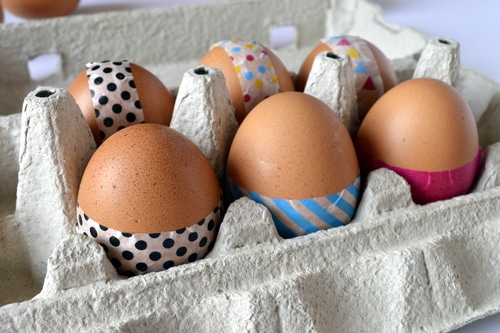
Japan’s approach to Easter may be less widespread, but when celebrated, it’s done with the elegance and artistry the country is known for. Enter: washi eggs.
These delicate creations are wrapped in colorful washi paper, a traditional Japanese craft paper. The washi eggs showcase intricate patterns like cherry blossoms or graceful cranes. No dyes or brushes here. Just patience, precision, and the timeless charm of Japanese design.
Italy: Perfumed Surprise Eggs
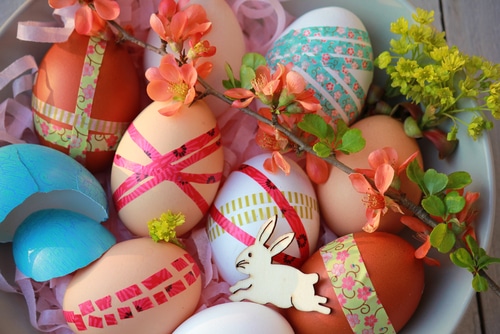
Italy puts its signature stylish twist on Easter with cascarones, which are hollowed-out eggs filled with surprises. These aren’t just pretty to look at. They’re designed to be cracked open with flair!
Some are filled with confetti or small toys, while others contain scented powders for an aromatic surprise. During celebrations, friends gently break the eggs over each other’s heads, releasing laughter, color, and good vibes.
Mexico: Confetti-Filled Joy
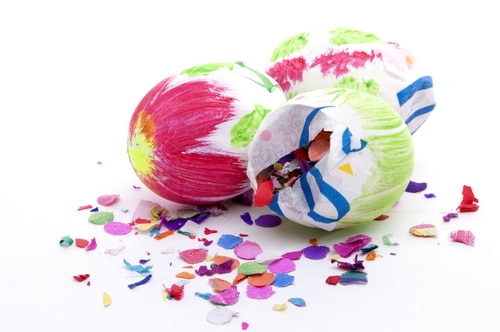
Speaking of cascarones, Mexico takes them to a whole new level. Easter isn’t complete without streets full of laughter, music, and the joyful crunch of colorful eggs being cracked overhead.
Filled with confetti and love, these vibrant eggs are used in family gatherings and public parades. It’s a tradition that turns Easter into a full-on fiesta, symbolizing fun, good fortune, and community spirit.
South Africa: Artistry in Beads
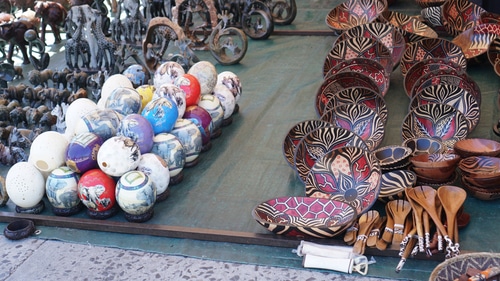
In South Africa, Easter eggs can be found glimmering with vibrant beadwork. Artists turn eggshells and sometimes even ostrich eggs into elaborate canvases, each tiny bead hand-placed to form meaningful patterns.
These beaded eggs are often exchanged as tokens of luck, love, or prosperity. They’re living testaments to South Africa’s rich cultural heritage and a celebration of both tradition and craftsmanship.
United States: Eco-Friendly Easter Fun
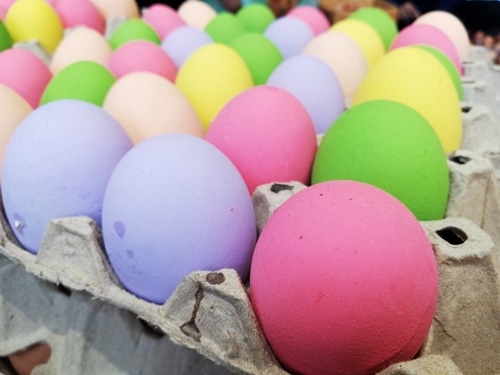
The U.S. blends traditional egg hunts with a growing love for eco-friendly crafts. More families now use natural dyes from beets, turmeric, red cabbage, or coffee to color their eggs. The results are earthy, unique, and kind to the planet.
The White House Easter Egg Roll is one of the most famous Easter events in the country. Held on the lawn each spring, it brings families together to play, paint, and roll colorful eggs down a hill. It’s the perfect mix of old-fashioned fun and modern creativity.
France: Sophisticated Porcelain Keepsakes
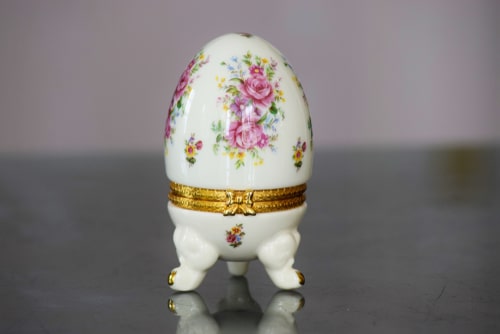
Leave it to France to turn Easter eggs into chic collectibles. French Easter eggs made of porcelain are beautifully painted and often feature patterns like toile, gingham, and chinoiserie. Some are even trimmed with gold.
These aren’t the kind of eggs you crack open, they’re elegant keepsakes passed down through families, gracing mantels and dinner tables during spring. They celebrate the French love for timeless design and refined traditions.
| Pattern | Description |
|---|---|
| Toile | Scenic patterns typically in blue and white |
| Floral | Delicate flower arrangements |
| Gingham | Checkered patterns in various colors |
| Geometric | Abstract shapes and lines |
| Chinoiserie | Chinese-inspired scenes and motifs |
Eggs That Tell Stories
Around the world, Easter eggs are so much more than painted shells. They carry stories, symbols, and generations of tradition. Whether it’s the bold red eggs of Greece, the artistic pysanky of Ukraine, or the joyful cascarones of Mexico. Each one reflects the beauty of the people who make them.
So this Easter, maybe add a new twist to your own celebration. Try a natural dye, hang some eggs on a tree, or craft your own washi egg masterpiece. You’ll not only add some flair to your holiday, you’ll also be part of a global story about joy, art, and renewal.
How Do People Celebrate Easter Without Phone Alarms Around the World?
Easter celebrations worldwide often embrace simpler traditions, encouraging mindfulness. Families gather for sunrise services or prepare festive meals, using different ways to wake up naturally. From the sound of birds chirping to the warm glow of sunlight streaming through windows, these rituals kindle joy and connection, fostering a deeper appreciation for the moment.
FAQs
What are Easter eggs traditionally made from around the world?
People use real eggshells, wooden eggs, porcelain, and even ostrich eggs. Decorations vary too from natural dyes and wax to paper, beads, and even perfumed powders.
Why do different cultures decorate eggs so differently?
Each culture weaves its history and beliefs into its Easter traditions. Some focus on religion, others on nature, luck, or family. That’s what makes exploring them so fascinating!
Are there eco-friendly ways to dye Easter eggs?
Yes! Many people use natural ingredients like beetroot, onion skins, turmeric, or red cabbage to make eco-friendly dyes. These look beautiful and are gentle on the planet.
What’s the most artistic Easter egg tradition?
Ukrainian pysanky and Japanese washi eggs are both known for their intricacy. While pysanky use wax and layers of dye, washi eggs rely on the precision of paper design.
Do Easter eggs always have religious meaning?
Not always. While red eggs in Greece symbolize the blood of Christ, others like cascarones focus more on luck and celebration. The meaning often depends on the country and custom.
What’s a fun way to add a global touch to my Easter?
Try mixing traditions! Hang painted eggs like the Germans, play Tsougrisma like the Greeks, or use natural dyes like in the U.S. It’s a fun way to make your Easter more meaningful and creative.
